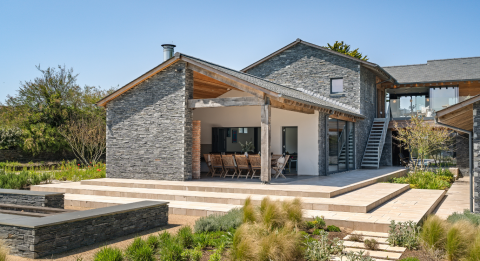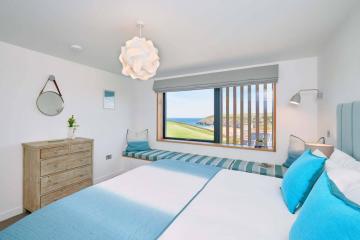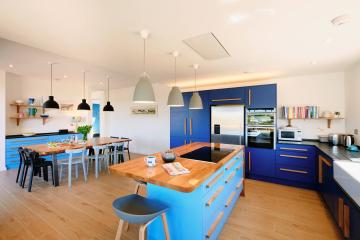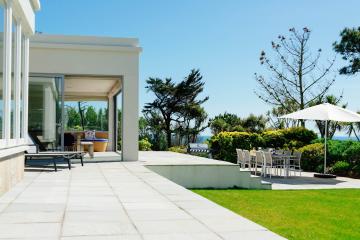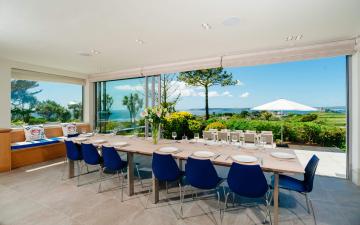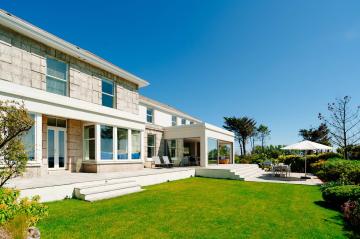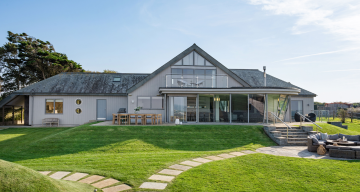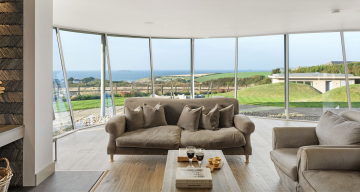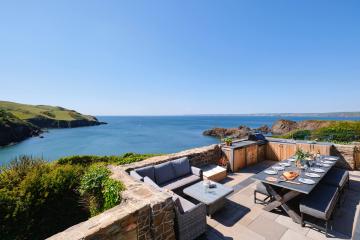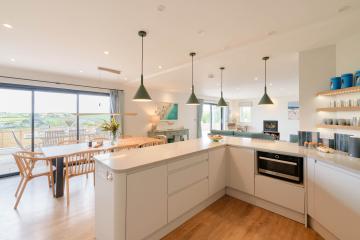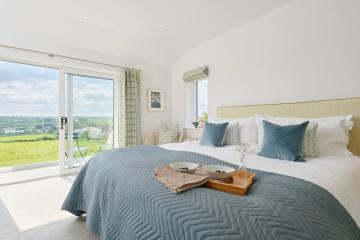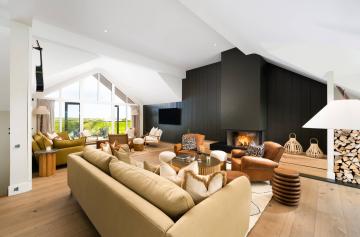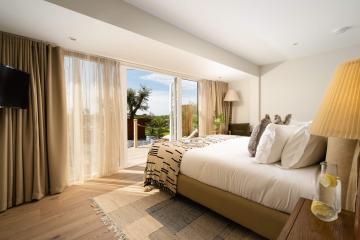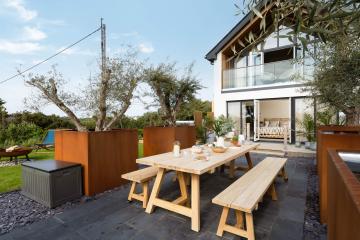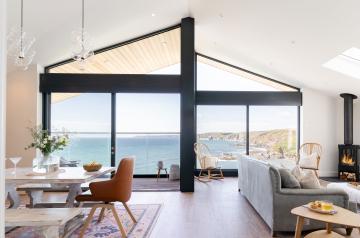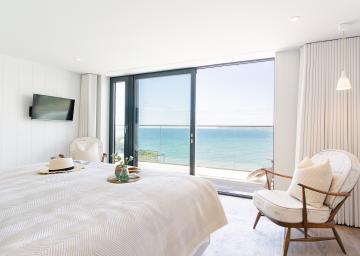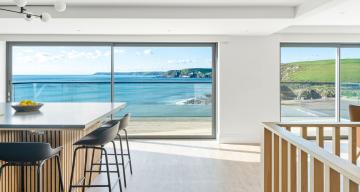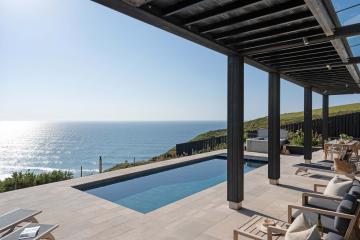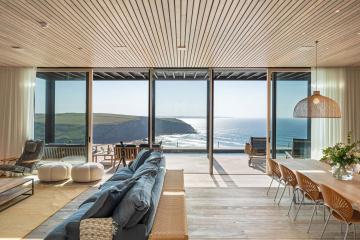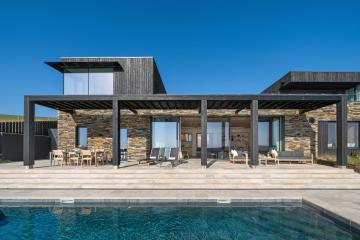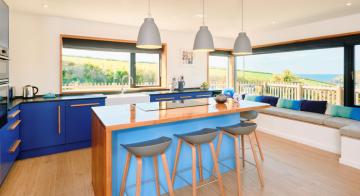Embrace a sustainable and innovative approach
Spring has officially arrived, bringing longer days, brighter blooms, and the perfect excuse to pull on our wellies and step outside. Whether you're refreshing flower beds, planning a full garden redesign, or considering the landscaping of a new build, now is the time to embrace the latest trends in outdoor spaces.
In recent years, we've seen gardens evolve beyond aesthetics, with homeowners and designers focusing on sustainability, practicality, and year-round enjoyment. As we welcome new properties onto our portfolio, it’s clear that the best outdoor spaces are those that blend beauty with functionality.
With that in mind, here are five key garden trends shaping 2025 - perfect for enhancing any outdoor space, big or small.
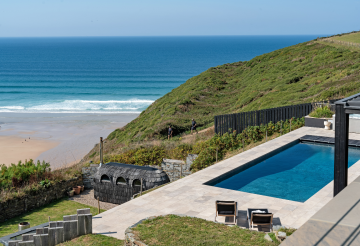
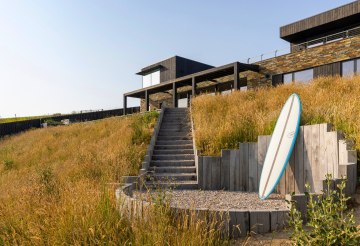
Above: Red Cove in Mawgan Porth.
1. Native landscaping
Native landscaping refers to a garden that reflects its surroundings and supports local biodiversity. Red Cove, designed by Rathbone Partnership, has done this perfectly, where the landscaping has been carefully considered to blend seamlessly with its coastal setting. By using native plants and locally sourced stone and wood, this approach ensures an organic, harmonious look while reducing the need for excessive maintenance.
Sitting on the edge of Mawgan Porth’s headland, the landscapers also incorporated wildflowers and heather to tumble over its edges and encourage a natural blend between the outside space and the start of the South West Coast Path.
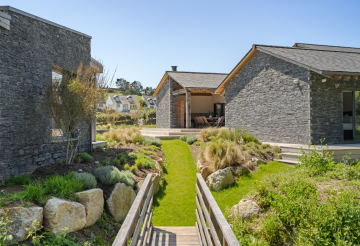

Above: Noordhoek in Porthcothan.
2. Tapestry lawns
Traditional grass lawns are gradually making way for tapestry lawns in 2025. A low-maintenance, bio-diverse alternative composed of wildflowers, herbs, and ground-cover plants, the lawns create a textured, ever-changing landscape, reducing the need for mowing while attracting bees and butterflies.
Mown grass paths, also known as desire paths, are also trending this year. Rather than vast expanses of manicured lawns, carefully shaped pathways allow for natural growth and frame the space beautifully. Noordhoek does this well, designed by award-winning landscaper Sam Ovens, with native grasses carving out smaller walkways amongst the expansive grounds.
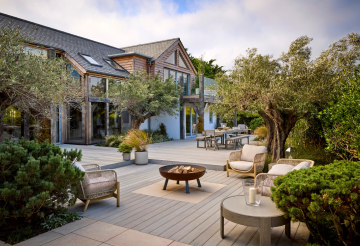
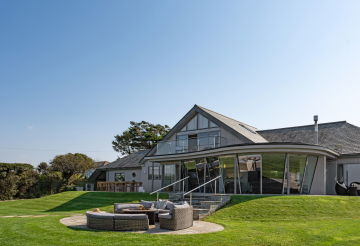
Left: Constantia in Constantine Bay. Right: Pentyak in Harlyn Bay.
3. Multifunctional outdoor spaces
Outdoor areas are no longer just for summer barbeques and garden games – they’re evolving into versatile extensions of the home for year-round use. You can see this in action at properties like Constantia, Four Geese, and Treyarnon View where facilities like fire pits and outdoor baths enhance the experience of being outside, whatever the season. Unique features like Noordhoek's pétanque court and Pentyak's treehouse can also encourage families to step away from screens and back into nature.
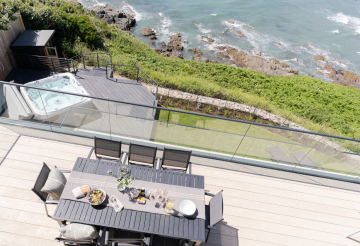
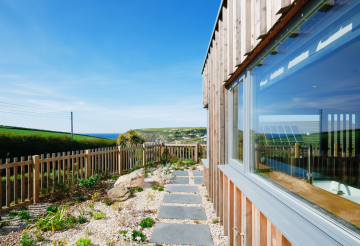
Left: Clifftop in Bigbury-on-Sea. Right: Prennek House in Mawgan Porth.
4. Climate-resilient landscaping
With unpredictable weather patterns entering our forecasts, resilient garden design is set to become a priority. Choosing hardy native plants, implementing water-efficient irrigation systems, and using permeable materials for paths and patios are all effective ways to future-proof outdoor spaces.
Properties like Clifftop, Prennek House, and Noordhoek have been designed with their carbon footprint in mind, and their outside spaces reflect this commitment. Noordhoek features a borehole water supply, while Prennek House opted for a low-maintenance gravel garden, both of which reduce their reliance on external sources and minimise their water usage. Designer Jo Midwinter explains her approach to Prennek House:
“The planting needed to provide seasonal interest and be extremely robust to cope with the challenging coastal conditions.”
Similarly, Clifftop’s position above the ocean meant it had to withstand the elements, so the design team utilised locally sourced woods, weather-resistant glass balustrading, and coastal planting to ensure the space thrives year-round.
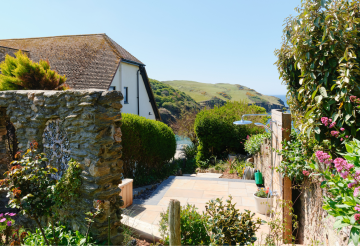
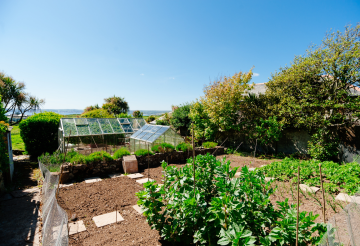
Left: Tamarisks in Hope Cove. Right: Ednovean House in Perranuthnoe.
5. Edible landscaping
Being able to step outside and find an abundance of herbs, fruits, and vegetables is becoming popular among homeowners. Often referred to as "food-scaping", it’s a trend that has become more popular in the past few years as people return to horticulture hobbies. It's thought to have started trending as people look for ways to become more sustainable and create happy habitats for wildlife. But beyond self-sufficiency, edible plants also add colour, texture, and seasonal change.
Herb gardens and fruit trees can be an easy way to incorporate this design trend into your luxury rental. Tamarisks and The Lookout do just this and encourage guests to pick their own herbs from their small walled garden. Whether it’s a pot of mint ready for icy mojitos or chives for summer salads, these hardy herbs grow back each year and require minimal maintenance.
Although, it needn’t be limited to herbs, Ednovean House have a small kitchen garden which guests are able to help themselves to. This includes easy to grow veg like lettuce, onions, and carrots, but plants like rhubarb and strawberries are also a nice, vibrant alternative to incorporate into gardens.
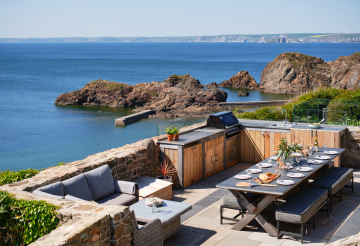

Left: Tamarisks in Hope Cove. Right: Ednovean House in Perranuthnoe.
Thinking of joining our portfolio?
Our friendly Portfolio team are here to guide you through the process, offering expert advice on preparing your home for the luxury rental market. Whether you’ve just purchased, are mid-renovation, or are planning your next investment, we’re happy to help. You can read more owner testimonials here or reach out to our team on owners@perfectstays.co.uk and 01208 895 750.
Image and quote credits: Jo Midwinter via her website | All images are our own.
Posted by Bethany Walton
Beth can usually be found on a Cornish beach or enjoying a swim in the sea. She has great insight about where to visit across the county, plus plenty of recommendations for finding the best Cornish ice cream.


